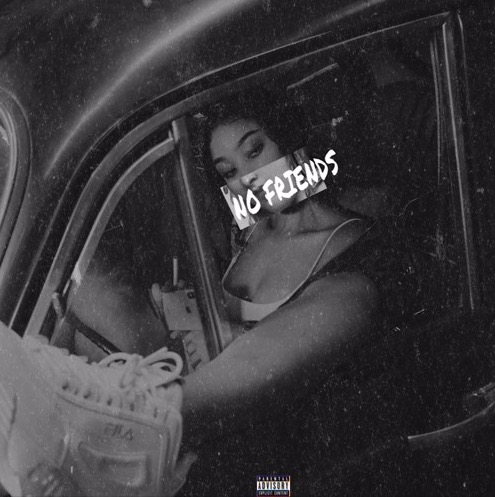Punta Music Has Never Been a Honduran ‘Thing,’ It Has Always Been a Black OnePunta Music Has Never Been a Honduran ‘Thing,’ It Has Always Been a Black One
I was 12 years old when I went to my first fedu, a Garifuna word for a traditional gathering or party in Honduras. I was intrigued by how comfortable everyone was: The women dressed in traditional garments danced to the beat of the drum and sang to the sound of hands clapping. It was effortless. I had never seen anything like it. While I had been to family functions and seen my aunts dance, this did not compare. It was mesmerizing, especially with everyone being Black. It was different, and it set me on a journey to discover who I was.
Growing up in Charlotte, North Carolina, I struggled to find a sense of belonging in a community that did not accept me but accepted what my Blackness could give them. I wrestled with constantly being challenged to prove myself, not realizing that we are burdened with defending ourselves from the people we call our neighbors. Through music, Garifunas have told their story. But sadly, Punta is one of the countless Black musical movements that are having its history erased. The scene at my first fedu was unlike the music videos I grew up watching on YouTube where the Garifuna men would beat the drums, and the fair-skinned and dark-haired women would dance in front of them.
In my introduction to Punta, I saw my Blackness be celebrated. But to the rest of the world, their introduction to Punta showed my Blackness used as an accessory. Something you put on and take off when you are done with it. That’s why it is disheartening to watch the deliberate whitewashing of this sacred genre of music. The genre’s mainstream face is based on the misconception that Punta is the heartbeat of the Honduran people, the entirety of the country. In fact, this genre is rooted in a more specific community: the Garifuna people, the descendants of mixed West African and indigenous people that have historically resided on the Caribbean coast of Central America.
To Garifunas, Honduras is a country that refuses to see itself through an identity etched in Blackness and insists on disguising itself in whiteness, creating what the world recognizes today as “Honduran culture.” On the outside, Punta is simply a genre of music played at parties and family gatherings. However, the reality is that to non-Garifuna people, Punta is what Blackface minstrelsy is to white Americans — a theatrical show with various moving parts coupled with the sociological belief that Black people are merely another form of entertainment. In this instance, though, it’s without the costume.
The Garinagu (the plural form of Garifuna) have called Honduras home for approximately 300 years. It’s a community that settled in the country and other parts of Central America like Nicaragua, Guatemala, and Belize, after a shipwrecked British slave ship washed ashore on the Caribbean island of St. Vincent. They brought their language, diet, religion, culture, and music with them. Their music is in the rhythmic beating of drums to the calabash maracas, conch shells, turtle shells, and call-and-response chants accompanied with the sacred dance of Punta. By the Garinagu, these traditions have long existed before being brought to the Central American region. So, how did this 400-year tradition become the face of cultural ethnocide?
In the ’90s, renowned musicians spearheaded Punta music, such as former congressman Aurelio Martinez, Jimmy Suazo, Andy Palacio, Paula Castillo, Guifity, Nino Arzu, Garifuna Star Band, and Libana Maraza, to name a few. Each artists’ goal has been to keep our stories and mere existence alive through the influence of music. Whether it is the tragic story of a mother losing her child or the story of the exile of our people or even the forced displacement of an entire community by the Honduran government, these stories have become our inheritance from our ancestors.
As time passed and the genre’s popularity caught the attention of people worldwide with songs like “Sara Sara” and “Guiriga,” the demand for its expansion grew. As a result, it led to the formation of predominantly white non-Garifuna acts experimenting with the genre, with artists like The Silver Star, Las Chicas Rolands, Kazzabe, Los Roland’s, and the infamous Banda Blanca. These Honduran musicians seemingly felt entitled to this genre and its culture — a mindset we’ve seen historically play out within the music industry when it comes to Black music. They not only exploited the Garifuna language by using ancestral chants as “catchy” chorus lines, but they also used the same instruments and traditional dances.
Then, these white musicians attempted to “unify” Punta by including Black musicians and performers in their projects and creating new sub-genres like Punta Catracha. However, in doing so, they minimized the genre’s Blackness to a feature while claiming false ownership of it. This phenomenon started a ripple effect that challenged the credibility of Garifuna artists on a global spectrum. This rift is what differentiates Punta Catracha from Punta Garifuna. This false rectification persists today — just last June, Amara La Negra received tremendous backlash after promoting a song she featured in called “Pompis” with white Honduran artists El Chevo and Mr. JC. The song faced accusations of appropriating the original song from the ‘90s, “Pompis con Pompis” by Afro-Honduran Punta artist and community leader Aurelio Martinez.
El Chevo used the same chorus, a mixed version of the same beat, and ancestral Garifuna chants on his 2021 version. For the music video, he featured fair-skinned and straight-haired women dancing to a watered-down version of Punta and only included Garifunas in the last two scenes of a three-minute video. As a response to the backlash, El Chevo went live on Instagram to state that he believed the Garifuna people should be “grateful” for exposing the genre to a broader audience and ridiculed the Garinagu for gatekeeping the tradition.
However, his response is what non-Black artists like him in the music industry reiterate to excuse themselves from assuming accountability when appropriating Black genres. Another infamous example is centered on the song that became the anthem of Honduras in the 1990s: “Sopa de Caracol” by Banda Blanca. This iconic single was a plagiarized version of the Punta rock song “Conch Soup” by Belizean Garifuna artist Herman “Chico” Ramos. Similar to “Pompis,” the music video for “Sopa de Caracol” solely featured fair-skinned and straight-haired people, and though it used the Garifuna language and claimed it was a Punta rock song, it was not. Instead, it was an appropriated version of it. Moreover, Banda Blanca’s song was released 10 years after the original. It was not until 1994 when Ramos took to the courts and settled five years later that he received copyright and was listed as one of the songwriters for “Sopa de Caracol.”
As a result of years of cultural erasure, the commercialization of Punta has sparked a decades-long disenfranchisement, an attempt to erase the rich history of the Garinagu from the country. It has allowed non-Garifuna white artists to make millions off the backs of Black culture. And over time, it has erased Garifuna artists’ existence and permitted others to disregard their contribution and their right to advocate for compensation.
To pay homage to any genre is to acknowledge the music and the people behind it. That’s why it’s crucial to not only pay tribute to its roots but support contemporary Garifuna artists like Garifuna Legacy, Xstcasy band, Socie Gck, and Lil June, who are reclaiming this 400-year-old tradition. Brooklyn native and founder of Afro-Punta Lil June is known as one of the most influential and respected Garifuna artists of his time and intentionally showcases his culture in his music videos and lyrics.
As more Black genres like Punta become mainstream in their countries of origin and in the U.S., I urge that we honor the artists who are doing and have already done the work to popularize the movement. We need to protect Punta from being subjected to further erasure of its Blackness. This means choosing to listen to Garifuna punta artists, sharing their music, and tagging them on social media platforms. As consumers, we not only have a responsibility to shape the future of the music industry and also to make sure the past is rightfully acknowledged and celebrated.
When I hear or see Punta, I want to be taken back to sitting on the front porch of my aunt’s house. I want to be captivated by the pulse of the drums, the movement of my aunts’ feet on the ground as they connect with the ancestors, and the sway of their hips against their skirts. I want to remember the music in the entirety of its Black roots.



